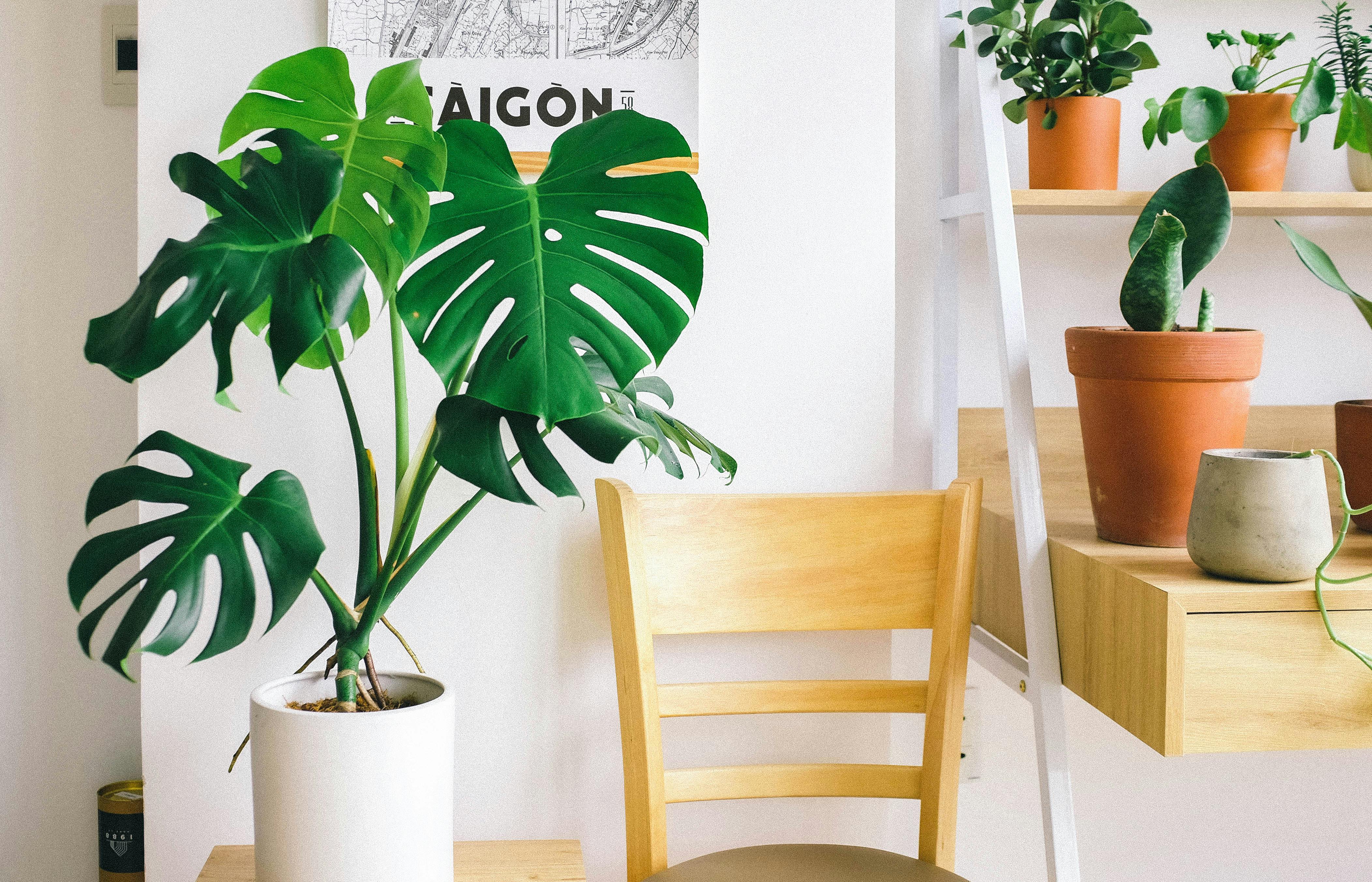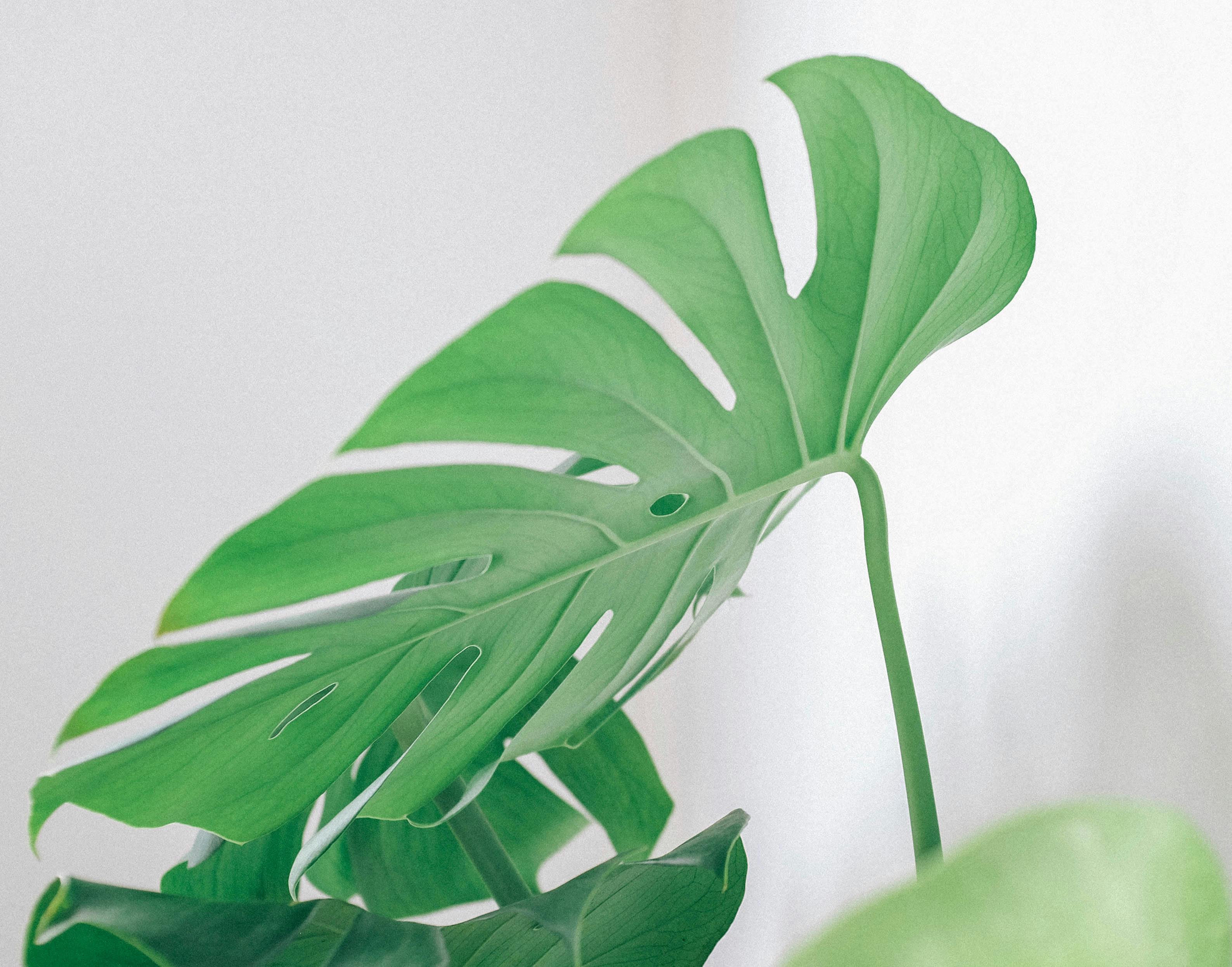Finding Solutions to Keep Monstera Plant Upright
Keeping a Monstera plant upright can be challenging, but it is possible with the right solutions. One way to keep a Monstera plant upright is by using a moss pole or bamboo stake. Moss poles are specifically designed for climbing plants, and they are made of natural moss that provides support while also allowing the plant to cling to it as it grows. Bamboo stakes are also an effective way of providing support for the Monstera, and they can be placed in the pot when planting the plant. Both moss poles and bamboo stakes should be securely fastened to the pot and should be periodically re-positioned as the plant grows.
Another solution for keeping a Monstera plant upright is by using a trellis or other type of wall mount system. Trellises can provide an attractive way to display your Monstera, while also keeping it upright. Wall mount systems provide additional support for larger plants, and they are often adjustable so you can raise or lower them as needed. The wall mount system should be securely mounted into the wall or ceiling and adjusted on an ongoing basis as needed.
Finally, pruning is another important solution for keeping your Monstera plant upright. Pruning helps control the shape of the plant and encourages it to branch out in different directions, rather than growing up in one direction. Pruning should be done once or twice a year, depending on how quickly your Monstera grows. It’s important to prune carefully so that you don’t damage any of the branches or leaves of your beloved plant!
Why Is My Monstera Plant Turning Yellow?
When your Monstera plant starts to turn yellow, it can be a sign of distress. This could be due to a number of causes, including too much or too little light, improper watering, and nutrient deficiencies. To help your plant recover its vibrant green hue, it is important to identify the cause of the yellowing and take the necessary steps to rectify the issue.
Too Much or Too Little Light
Monstera plants prefer indirect, bright light. When exposed to direct sunlight for extended periods of time, they can suffer sunburns which can cause their leaves to turn yellow. Conversely, if they are not getting enough light they will also start to turn yellow with their growth stunted. To ensure that your Monstera is receiving the optimal amount of light adjust its positioning in relation to windows and other sources of illumination until you find a sweet spot.
Improper Watering
Monsteras like their soil kept moist but not soggy. Overwatering can lead to root rot which can cause the leaves on your plant to turn yellow and eventually fall off. On the other hand, underwatering can lead to dehydration which will also cause yellowing leaves and stunted growth. It is best practice when caring for a Monstera to feel the soil before watering and only water if it feels dry.
Nutrient Deficiencies
If you have been providing your Monstera with adequate light and water but still see yellowing leaves then there is a chance that it could be suffering from nutrient deficiencies in its soil. Adding liquid fertilizer or compost tea into its soil every few weeks during its growing season can help replenish nutrients in its soil and restore vibrancy in your plant’s foliage.
Reasons for Excessive Watering of Monstera Plant
Many people have a hard time understanding why their Monstera plant is overwatered, but there are several reasons why this might be happening. The most common reason is that the soil in which the plant is grown is too moist. If the soil is constantly wet, it can lead to root rot and other problems. Additionally, if the pot in which the plant is growing has poor drainage, then water will not be able to escape easily and can cause excessive watering. Another reason for overwatering may be due to a lack of air circulation around the plant. If there isn’t enough air moving around the leaves and roots of the plant, it can cause them to become too wet and lead to overwatering. Finally, if you are over-fertilizing your Monstera plant, this can also cause it to become excessively watered as well.
In order to prevent your Monstera from becoming overwatered, it’s important to make sure that you are providing it with adequate drainage and air circulation. Make sure that you are planting your Monstera in well-draining soil so that any excess water can escape easily. Additionally, be sure to avoid over-fertilizing your plant as this could lead to excessive watering as well. Finally, make sure that you are not leaving your Monstera sitting in water for too long as this could also lead to overwatering issues.

How to Fix an Overwatered Monstera Plant
Monstera plants are a popular houseplant known for their unique leaves with natural splits and holes. While they’re relatively low maintenance, they can still be prone to problems if not cared for properly. One of the most common issues is overwatering, which can cause wilting and yellowing of the leaves. If your Monstera has been overwatered, there are a few steps you can take to help it recover.
The first step is to check the soil. If it’s soggy and waterlogged, you’ll need to remove some of the excess moisture. This can be done by gently squeezing out any excess water from the soil or using a chopstick or skewer to aerate it. Once you’ve removed as much water as possible, let the soil dry out completely before watering again.
Next, examine the roots of your Monstera for signs of root rot. If any appear dark or mushy, these will need to be removed with a pair of sterilized scissors or pruners. Be sure to cut away any affected roots and discard them in the trash so they don’t spread the infection further.
Once you’ve trimmed away any damaged roots, repot your Monstera in fresh potting mix that is well-draining and contains plenty of organic material such as peat moss or composted manure. It should also contain some perlite or vermiculite which will help keep moisture levels balanced and prevent future overwatering issues.
Finally, adjust your watering schedule so that your Monstera only receives enough water for its size and environmental conditions. A good rule of thumb is to water when the top 2-3 inches (5-7 cm) of soil are dry; if in doubt, wait an extra day before watering again as overwatering is generally worse than underwatering in this species.
Root Rot in Monstera Plants
Root rot is a common issue that can affect Monstera plants. It is caused by a variety of environmental factors including overwatering, poor drainage, and soil that is too soggy. The root system of the plant can become weakened and unable to absorb nutrients, leading to wilting, yellowing leaves, and eventually death if not treated quickly. To prevent root rot in Monstera plants, it’s important to provide the right amount of water and ensure proper drainage. Soil should be well-draining and not overly saturated with water. If the soil feels wet for more than a few days after watering, it may be time to repot the plant into new potting mix with better drainage. Additionally, if you notice signs of root rot such as discolored or mushy roots, it’s important to remove the affected roots as quickly as possible and repot the plant into fresh soil.
Signs of Underwatering a Monstera Plant
Underwatering your Monstera plant can be a serious issue and, if left unaddressed, can cause irreversible damage. Signs that your plant may be underwatering include yellowing of foliage, wilting leaves, brown spots or soft areas on the leaves, and an overall lack of vigor. The soil should feel dry to the touch when it’s time to water the plant again. If you notice any of these signs, it’s important to adjust your watering routine immediately.
The most common cause of underwatering is simply forgetting to water your Monstera plant regularly. This is especially true for houseplants since they don’t typically get natural rainfall indoors. Make sure you’re checking the soil moisture regularly and giving your plant enough water so that the top inch or two of soil are moist but not soggy.
Another common issue is using pots that are too large in relation to the size of the root system. If the pot is larger than necessary for a given size of root system, it will take longer for soil to become dry enough for watering again. This can lead to underwatering if you forget that it needs less frequent watering than normal.
Finally, some people mistakenly believe that their plants need less water in winter months due to lower temperatures or reduced sunlight levels. While this may be true for certain outdoor plants, most houseplants still require regular watering all year round regardless of temperature or light conditions.
It’s important to monitor your Monstera’s water needs closely and adjust as needed since overwatering can also cause serious damage. If you find yourself struggling with an underwatering problem in spite of careful monitoring, consider switching to a self-watering pot which will help keep consistent moisture levels in the soil and reduce the risk of under- or overwatering.

Conclusion
Drooping leaves on a monstera plant can be caused by several factors, such as inadequate light, overwatering, or improper fertilization. To bring your monstera back to life, you can adjust the light levels and water frequency, and ensure that you are providing the right kind of fertilizer. Additionally, it’s important to keep an eye on the temperature and humidity levels in the environment your monstera is growing in. With proper care and attention, your drooping monstera should soon be thriving again.
In summary, any drooping in a monstera plant is likely due to environmental factors. Providing adequate light, water, fertilizer, temperature and humidity will help ensure your monstera stays happy and healthy.

